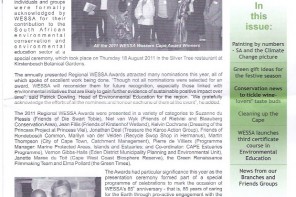We will live differently, but we will live well
A major new study by WWF demonstrates that all of the world’s energy needs could be provided cleanly, renewably and economically by 2050.
Two years in preparation, The Energy Report breaks new ground with its global scope and its consideration of total energy needs including transport, and making adequate and safe energy available to all.
“If we continue to rely on fossil fuels, we face a future of increasing anxieties over energy costs, energy security and climate change impacts,” said WWF Director General Jim Leape. “We are offering an alternative scenario – far more promising and entirely achievable.The Energy Report shows that in four decades we can have a world of vibrant economies and societies powered entirely by clean, cheap and renewable energy and with a vastly improved quality of life. The report is more than a scenario – it’s a call for action. We can achieve a cleaner, renewable future, but we must start now.”
The two-part report contains a detailed analysis and scenario presented by respected energy consultancy Ecofys, and an analysis by WWF. It shows that by 2050, power, transport, industrial and domestic energy needs could be met with only isolated residual uses of fossil and nuclear fuels – vastly reducing anxieties over energy security, pollution and not least, catastrophic climate change.
Energy efficiency in buildings, vehicles and industry would be a key ingredient, along with an increase in the energy needs met through electric power, renewably generated and supplied through smart grids.
“The report goes a long way towards addressing perceptions perpetuated by Eskom and others that we will always need large-scale coal and/or nuclear power to provide adequate energy services for human progress, either in South or elsewhere. Alongside work to elaborate the smart grid that we need for sustainable electricity supply, we need a concerted approach to low-carbon reindustrialisation to achieve the growth rates required in renewable energy technology industries. This means moving away from the baseload fallacy that renewables are insufficient to support industrialised society,” said WWF-SA Climate Change Programme Manager Richard Worthington.
Under the Ecofys scenario, in 2050 total energy demand will be 15 percent lower than in 2005, despite increases in population, industrial output, freight and travel – and energy being made available to those currently not enjoying its benefits. The world no longer relies on coal, or nuclear fuels, while international rules and cooperation limit potential environmental damage from biofuel production and hydroelectricity development.
“In this report we are very deliberately not making extravagant assumptions about the benefits of technologies yet to come,” said Ecofys director Kees van der Leun. “This inherently means that this is a moderate estimate of the renewable energy future we could enjoy by 2050. At Ecofys we know that solutions for the global energy challenge are at hand. There are numerous systems that use energy more efficiently, allowing us to manage current energy sources more carefully. Moreover, we understand the opportunities in using the vast amounts of sustainable energy that surround us.”
Providing reliable, affordable and clean energy on the scale required will need a global effort – similar to the global response to the world financial crisis. But the benefits would be much greater in the long term, with the savings from lower energy costs balancing total new investments in renewable energy and energy efficiency by 2040 and savings over a “Business-As-Usual” scenario amounting to around €4 trillion from lower energy costs alone by 2050.
Other benefits are savings from avoiding energy security conflicts, dirty spills and supply disruptions that are inherent in sourcing ever scarcer fossil fuels from more and more politically or environmentally challenging areas.
Importantly, The Energy Report scenario would see CO2 emissions from the world’s energy supply sector reduced by over 80% by 2050 – providing a high level of confidence that the average global temperature rise will be limited to the less than the two degrees Celsius threshold identified as presenting unacceptable risks of catastrophic climate change.
“We will live differently, but we will live well,” said Jim Leape. “We must provide energy for all without imperiling our planet, and this report shows that we can.”
Download the Energy Report here (16.50MB pdf)
Via WWF
The liveeco team







